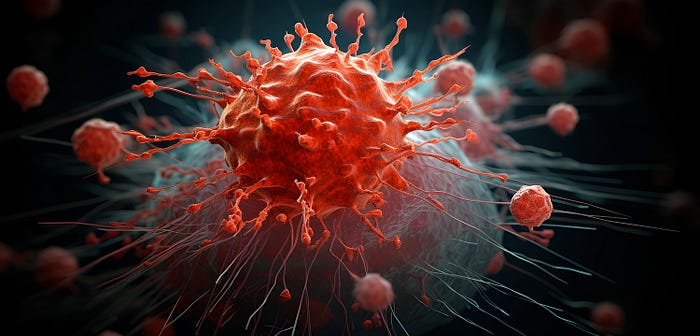Breakthrough in early detection of prostate cancer relapse

The early bird gets the worm, and early detection can catch disease sooner, when treatment can be more effective. That’s as true for the first onset of a disease as for a relapse. Disease doesn’t always occur only once — even after cure, there can be a reversion. Just as early detection is critical to treating the original occurrence, it’s vital to catch the warning signs — the biomarkers — of the relapse in time to initiate a new round of therapeutic intervention.
Prostate cancer is no exception. Detecting its recurrence after external beam radiotherapy (EBRT) depends on measuring an increase in serum prostate-specific antigen (PSA). As many as 20 to 50 percent of prostate cancer patients who received EBRT as a primary treatment will reach the accepted threshold of biochemical relapse — when PSA levels have risen 1 to 2 nanograms per milliliter above the lowest level of PSA detected — within 5 to 10 years after cessation of treatment.
We’re working to help save lives by predicting the relapse earlier. A multi-university team on which I serve developed a patent-pending computer model that, by using the level of a single biomarker, can forecast prostate cancer recurrence. Our investigations indicate this approach leads to a prediction of prostate cancer recurrence nearly 15 months sooner than standard methods. The timelier detection helps personalize PSA monitoring plans, so physicians can design individualized treatments and know when to look for issues to improve the chances of curing the disease.
Our mathematical model draws on research and equations that describe the relationship between PSA and the various pathways linked to prostate cancer. These elements include the death rate of damaged cells, percentage of cells damaged but not killed by the radiation treatment, and proliferation rate of surviving cells — information obtained from measured values of PSA on a patient-specific basis.
In our research, the model correctly predicted a relapse in 80 percent of prostate cancer patients 14.8 months earlier than standard methodology. We also discovered four additional model-based biomarkers that derive from PSA levels and outperform current diagnostic techniques: tumor cell proliferation rates, the ratio of those rates to radiation-induced tumor cell death rates, PSA’s lowest inferred value, and time from EBRT termination to PSA nadir.
The research was a collaborative effort. In addition to myself and the Purdue Institute for Cancer Research, participants included Alessandro Reali of the University of Pavia in Italy; Guillermo Lorenzo of the University of Pavia and The University of Texas at Austin; Victor Pérez-García of the University of Castilla-La Mancha; and researchers at Istituto di Recovero e Cura a Carattere Scientifico (IRCCS), San Raffaele Hospital and Scientific Institute in Italy.
The goal is to translate the results of these investigations to clinicians, in order to help guide their decision making during post-treatment monitoring of individual patients. This could inform things like the frequency of PSA data collection; for example, more frequent PSA data collection suggested by model forecasts of potential relapse could lead to earlier detection of the actual biochemical relapse. More data-rich clinical guidance also could improve the timing of testing for recurrence and estimates of clinical risks and survival, as well as help plan the best treatments for positive outcomes and minimal toxicity. In addition, our technology might reduce the potential for false positives and negatives that occur with other methods of identifying biochemical relapse.

Our testing was based on the healthcare records of 166 prostate cancer patients. We plan to strengthen this predictive performance by extending that cohort, increasing the number of patients who display biochemical relapse by pooling patients from multiple cancer centers and institutions. This expansion will be vital to future clinical use of our predictive technology.
Prostate cancer is the most common cancer and the second-leading cause of cancer death among men in the U.S., according the National Cancer Institute (NCI), part of the National Institutes of Health. The NCI estimates that in 2023, there were more than 288,000 new cases — comprising almost 15 percent of all new cancer cases — and nearly 35,000 people died from the disease.
Once patients are treated successfully for the first occurrence, we aim to help healthcare providers catch any potential relapse earlier so the patients can continue to lead healthy lives.

Hector Gomez, PhD
Professor of Mechanical Engineering
Professor of Biomedical Engineering (by courtesy)
College of Engineering
Faculty Member, Purdue University Institute for Cancer Research
Purdue University










